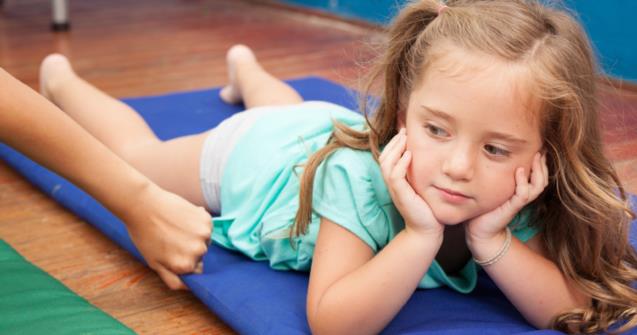
Learning to respect the personal space of others
If we were to ask a group of people to place a rope around themselves to represent their personal space, their "bubble", the results would surely vary greatly. Personally, I know that I have an enormous "bubble". I quickly become uncomfortable if a person gets too close and steps into my "bubble". I instinctively step back to recreate my personal space. Children have a "bubble" too and, like adults, each child's "bubble" can be very small or very big.
Young children depend on adults and therefore tend to stay very close to those who care for them. It can seem as if the whole "bubble" concept doesn't exist at this age. However, they will slowly develop their own need for personal space as they grow. Unfortunately, very few people are aware of this personal space and the importance of respecting the personal space of others, but also our own.
Close your eyes and pay attention to how you feel when someone enters your "bubble". You most likely won't feel very comfortable. The same is true for children. It is quite possible that many conflicts you manage daily arise because children's personal space is not respected. If one child enters another child's "bubble" too quickly, it may lead to frustration, screams, shoving, etc. Keep in mind that children are often clumsy when expressing themselves. For this reason, we must teach them adequate methods to express their feelings, ask others to step back, and ensure their personal space is respected. Beyond that, we must help them become aware of the fact that others have their own personal space that must also be respected.
How can we teach children about personal space?
The hula hoop game. Explain the "bubble" concept to your group. Have children hold a hula hoop around their waist and invite them to move about the daycare. Help them understand that whenever two hula hoops touch, their "bubble" and the other child's "bubble" are not being respected. Encourage them to take a step back to correct this situation.
My personal space. Every now and then, set an exercise mat or small carpet on the floor for each child. Invite children to play on their mat or carpet for a few minutes, respecting each other's personal space.
Role play. Puppets, dress-up play, and stories represent great ways to help children experiment adequate ways to express themselves. Use these tools to teach children about the importance of respecting the personal space of others.
Illustrations on the floor. You may have noticed that there are precise times when the children in your group have more difficulty respecting the personal space of others. For example, since children are required to sit together during circle time, children whose "bubble" is very small can be uncomfortable. Respecting the personal space of others can also be a problem when children must wait in line to wash their hands or go the bathroom. You can stick illustrations or pictures on the floor and invite children to sit or stand on them to help them visualize their personal space and respect the personal space of others.
Be a model for your group. As parents and early childhood educators, we can feel as if our own personal "bubble" no longer exists. Learn to tell children when they are in your "bubble" and kindly ask them to step back. Children learn by example. The more they hear you talk about your "bubble", the more they will be able to use this positive model on their own.
Remember, it all comes down to the consistency of your daily interventions. Be patient and your efforts will be rewarded.
Maude Dubé, Specialized educator

 Home
Home Theme activities
Theme activities
 Babies and toddlers
Babies and toddlers
 Arts and crafts
Arts and crafts
 Science
Science
 Creative recipes
Creative recipes
 Tips and tricks
Tips and tricks
 Special needs
Special needs
 Extra activities
Extra activities
 Educ-TV
Educ-TV
 Newsletter
Newsletter  Online store
Online store Educatall club
Educatall club

